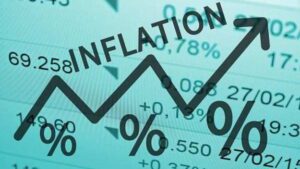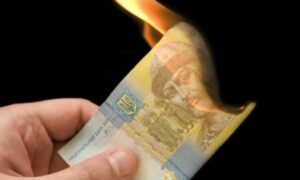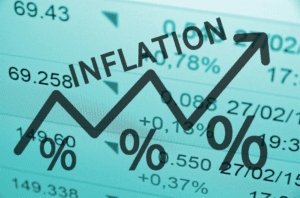
Inflation in Ukraine in annual terms in April may increase to 15.9% from 13.7% in March, this forecast was given by the head of the National Bank of Ukraine Kirill Shevchenko, referring to the NBU estimates based on web-scraping (method collecting prices from online supermarkets).
“In a war, it is impossible to avoid price increases … at the end of the year it (inflation) may exceed 20%. This is a significant level of price growth, but controlled. And such indicators are not comparable with 2015, when inflation reached 60% in some months,” wrote he is in the column for NV.Business.
Shevchenko stressed that the NBU has significant experience in fighting inflation.
“In general, in world history there were no cases when a country entered into a state of martial law, having such a highly developed financial system and monetary policy,” he added.
The head of the National Bank noted that while market mechanisms will have a limited impact on the market, the regulator will keep price growth by fixing the exchange rate and maintaining part of the restrictions.
“But as soon as monetary transmission channels start working and uncertainty decreases, we will return to the inflation targeting regime, which at one time helped to overcome the same 60% inflation,” Shevchenko said.
According to him, the National Bank will gradually restore the forecast cycle and again begin to apply the discount rate to reduce inflation to the target of 5% and keep inflation expectations under control.
As the State Statistics Service reported, consumer price growth in Ukraine in March 2022 accelerated to 4.5% from 1.6% in February, 1.3% in January and 0.6% in December. In March last year, inflation was 1.7%, so in annual terms, in March this year, it rose to 13.7% from 10.7% in February and 10% in January.

The growth of consumer prices in Ukraine in January 2022 accelerated to 1.3% from 0.6% in December and 0.8% in November 2021, the State Statistics Service reported.
At the same time, in January last year, it also amounted to 1.3%, so in annual terms, inflation remained at 10%, the agency said.
Underlying inflation fell to 0.1% last month from 0.4% in December and 0.8% in November. Taking into account 0.3% in January 2021, in annual terms underlying inflation decreased to 7.6% from 7.9% in the last year.
According to the State Statistics Service, in the consumer market in January 2022 compared to December 2021, prices for food and non-alcoholic beverages increased by 2.5%. Vegetables went up in price by 20.5%, prices for eggs, fruits, bread, milk and dairy products, meat and meat products, rice, lard, butter increased by 3.9-1%. Sugar and sunflower oil fell in price by 0.8% and 0.5%, respectively.
Prices for clothes and footwear fell by 5.7%, including footwear – by 6.1%, clothing – by 5.4%.
The increase in tariffs for housing, water, electricity, gas and other fuels by 0.7% was mainly due to an increase in sewerage tariffs by 14.9%, water supply – by 12%.
Last month, transport prices increased by 1.3%, primarily due to a 2.9% increase in the cost of travel in railway passenger transport, and a 2.6% increase in fuel and lubricating oils.
In the telecommunications sector, prices increased by 1.1%, which is associated with an increase in tariffs for local telephone communications by 13.6%.
The increase in the cost of education services by 1.6% was mainly due to the increase in fees for the maintenance of children in preschool institutions by 23.3%.
As reported, in 2021 inflation in Ukraine rose to 10% from 5% in 2020 and 4.1% in 2019, while underlying inflation rose to 7.9% against 4.5% a year earlier.

The growth of consumer prices in Ukraine in annual terms in August 2021 remained at the level of 10.2%, the State Statistics Service reported.
According to its data, after inflation of 0.1% in July, deflation of 0.2% was recorded in August this year, which corresponds to the dynamics of prices in August last year.
Underlying inflation in August was zero after deflation of 0.1% a month earlier. In August last year, an underlying inflation of 0.1% was recorded, respectively, in annual terms, it decreased to 7.2%.
In the consumer market in August, prices for food and non-alcoholic beverages decreased by 0.7%. Vegetables and fruits fell in price the most – by 18.3% and 5%, respectively. Prices for sunflower oil, pasta, rice and cheese fell by 1.0-0.2%. At the same time, prices for eggs increased by 18%, prices for sugar, meat and meat products, milk, sour cream, bread, butter, fermented milk products, fish and fish products rose by 3.6-0.3%.
Prices for alcoholic beverages and tobacco products increased by 0.4%, which is associated with a rise in prices for tobacco products by 1.0%.
Prices for clothes and footwear fell by 3%, in particular for footwear – by 3.7%, clothing – by 2.5%.
The rise in tariffs for housing, water, electricity, gas and other fuels by 0.6% was mainly due to an increase in prices for maintenance and repair of housing by 2.3%, natural gas – by 2.1%, sewage – by 0.9%, water supply – by 0.7%.
Transport prices increased by 0.8%, primarily due to the rise in the cost of transport services by 1.9%, fuel and oils – by 1.6%.
As reported, in June consumer prices in Ukraine increased by 0.2%, in May – by 1.3%.
In general, for the first eight months of this year, inflation in Ukraine amounted to 6.2%, underlying inflation – 4.2%.
The National Bank of Ukraine in July downgraded the inflation forecast for 2021 from 8% (in the April forecast) to 9.6%. According to it, by the end of the third quarter, inflation will peak this year at 11.2%, after which it will begin to decline.

The year-over-year growth of consumer prices in Ukraine in September 2021 accelerated to 11% from 10.2% in August, the State Statistics Service reported on Friday.
According to the service, after deflation of 0.2% in August, inflation was recorded at 1.2% in September this year, while in September last year, inflation was 0.5%.
In addition, the State Statistics Service last month recorded underlying inflation at 1.3% after zero underlying inflation in August 2021. In September last year, underlying inflation was 1.1%.
In the consumer market in September, prices for food and non-alcoholic beverages grew by 1.1%. Most of all (by 13.6%) eggs have risen in price. Prices for lard, vegetables, milk and dairy products, meat and meat products, butter and bread rose by 3.7-1.1%. At the same time, fruits, sunflower oil and sugar fell in price by 3.4-0.1%.
Prices for alcoholic beverages and tobacco products grew by 0.8%, which is associated with a rise in prices for tobacco products by 1.1%.
Clothes and footwear went up in price by 7.9%, including footwear – by 8.2%, clothes – by 7.6%.
The rise in prices (tariffs) for housing, water, electricity, gas and other fuels by 0.5% was mainly due to an increase in prices for natural gas by 1.8%, maintenance and repair of housing – by 1.4%, and housing rent – by 0.9%.
Transport prices decreased 0.1% due to a decrease in the cost of travel in railway passenger transport by 1.7%, fuel and oils – by 0.2%.
Education services have risen in price by 13.2%, namely: high education – by 17.3%, medium education – by 11.5%.
As reported, in August and July consumer prices rose by 10.2%, in June – by 0.2%, in May – by 1.3%.
In January-August 2021, inflation in Ukraine amounted to 7.5%, and underlying inflation was 5.5%.
The National Bank of Ukraine forecasted inflation in September-October at the level of 10-11% with a further decline below 10%.

Finance Minister Serhiy Marchenko sees the potential to keep inflation within 10%.
“There are hopes that it will be possible to keep inflation within 10%, not exceeding 10%,” he said during the Ukrainian Financial Forum, organized by ICU.
According to the State Statistics Service, inflation in July 2021 in Ukraine increased to 10.2% in annual terms, while in June this figure was at the level of 9.5%. At the same time, the NBU expects that by the end of the third quarter, inflation will peak this year at 11.2%.
Commenting on deteriorating expectations of a number of investment banks regarding the growth of the Ukrainian economy, the minister noted that these forecasts are based on GDP growth in the second quarter compared to the same period last year.
“It is still difficult to estimate the end of the year, because main capital investments and expenditures are planned for the third or fourth quarter,” Marchenko said.
According to him, the situation will improve, as evidenced by the constant growth of retail turnover, as well as the growth potential of the construction industry.
“By the end of the year, we expect a stable situation both in public finances and in the economy, without sharp shocks. I think that we will have 4% of GDP growth this year,” Marchenko said.
FINANCE MINISTER, INFLATION, SERHIY MARCHENKO, UKRAINE'S INFLATION

The National Bank of Ukraine (NBU) expects inflation to rise to 11% in 2021, according to a chart released by the central bank.
According to the forecast of the rate curve, the regulator expects inflation to slow down with a return to the 5% target in the second half of 2022.
It is indicated that with a probability of 30%, the inflation rate by the second half of 2022 will be in the range of 4-7.5%.